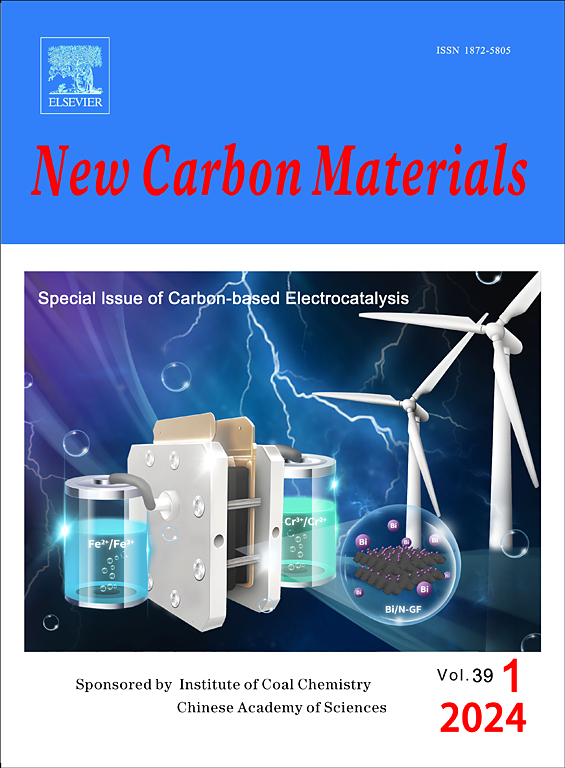生物质碳用于钠离子电池的研究进展
IF 5.7
3区 材料科学
Q2 Materials Science
引用次数: 0
摘要
钠离子电池(SIBs)已成为商用锂离子电池的一个有前途的替代品,因为锂和钠具有相似的性质,以及钠资源的丰富和可获得性。开发高容量、高倍率、长循环寿命的负极材料是sib产业化的关键。以资源丰富、低成本、可再生的生物质为原料合成的生物质衍生碳(BDC)负极材料得到了广泛的研究,其优异的储钠性能已被证明是最有前途的低成本、高性能sib负极材料。本文首先介绍了BDC的来源,包括植物、动物和微生物等废弃生物质,然后介绍了制备BDC阳极材料的几种方法,包括炭化法、化学活化法和模板法。研究了Na+在bdc中的储存机理、动力学过程及其结构控制。考察了不同结构bdc中钠离子存储的电化学性能,并对今后的研究提出了建议。下载:下载高清图片(181KB)下载:下载全尺寸图片本文章由计算机程序翻译,如有差异,请以英文原文为准。
Advances in the use of biomass-derived carbons for sodium-ion batteries
Sodium-ion batteries (SIBs) have emerged as a promising alternative to commercial lithium-ion batteries because of the similar properties of Li and Na as well as the abundance and accessibility of sodium resources. The development of anode materials with a high capacity, excellent rate performance, and long cycle life is the key to the industrialization of SIBs. Biomass-derived carbon (BDC) anode materials synthesized from resource-rich, low-cost, and renewable biomass have been extensively researched and their excellent sodium storage performance has been proven, making them the most promising new low-cost and high-performance anode material for SIBs. This review first introduces the sources of BDCs, including waste biomass such as plants, animals, and microorganisms, and then describes several methods for preparing BDC anode materials, including carbonization, chemical activation, and template methods. The storage mechanism and kinetic process of Na+ in BDCs are then considered as well as their structure control. The electrochemical properties of sodium-ion storage in BDCs with different structures are examined, and suggestions for future research are made.
- Download: Download high-res image (181KB)
- Download: Download full-size image
求助全文
通过发布文献求助,成功后即可免费获取论文全文。
去求助
来源期刊

New Carbon Materials
MATERIALS SCIENCE, MULTIDISCIPLINARY-
CiteScore
6.10
自引率
8.80%
发文量
3245
审稿时长
5.5 months
期刊介绍:
New Carbon Materials is a scholarly journal that publishes original research papers focusing on the physics, chemistry, and technology of organic substances that serve as precursors for creating carbonaceous solids with aromatic or tetrahedral bonding. The scope of materials covered by the journal extends from diamond and graphite to a variety of forms including chars, semicokes, mesophase substances, carbons, carbon fibers, carbynes, fullerenes, and carbon nanotubes. The journal's objective is to showcase the latest research findings and advancements in the areas of formation, structure, properties, behaviors, and technological applications of carbon materials. Additionally, the journal includes papers on the secondary production of new carbon and composite materials, such as carbon-carbon composites, derived from the aforementioned carbons. Research papers on organic substances will be considered for publication only if they have a direct relevance to the resulting carbon materials.
 求助内容:
求助内容: 应助结果提醒方式:
应助结果提醒方式:


